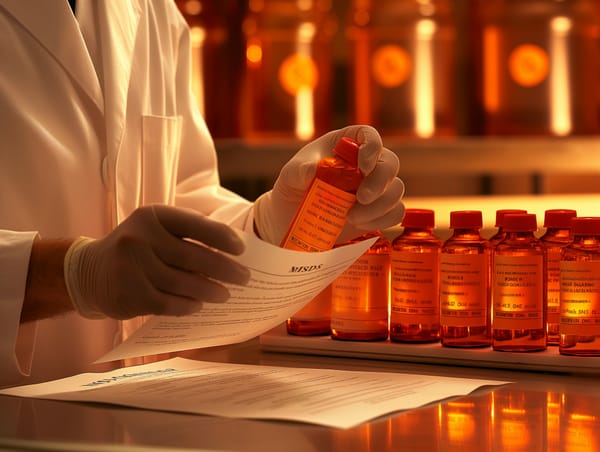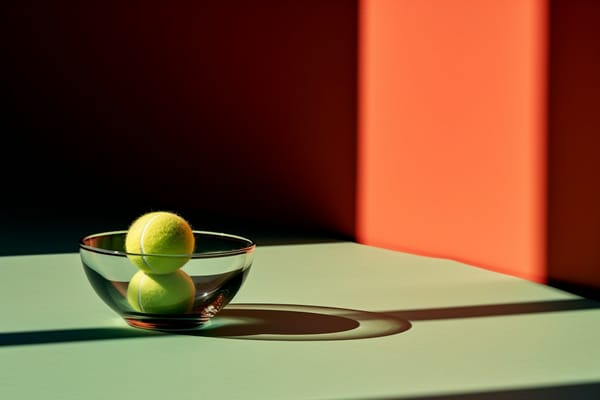Top 10 Python Web Frameworks for Your Next App in 2024: Features, Pros, Cons, and Use Cases
Table of Content
Choosing the right Python web framework is crucial for the success of your project. Whether you’re building a simple personal site or a complex enterprise application, the framework you select will influence the development process, scalability, and performance of your app.
Medevel.com offers a wealth of Python-related content, including articles and curated collections. These resources cover a wide range of topics, making them valuable for various tech professionals, including:
- Software developers
- Data scientists
- Data engineers
- Web developers
Discover our comprehensive Python resources by exploring the list below:
- Python Data Visualization Libraries
- Python Scraping Libraries
- Python Packages for Data scientists
- Top Libraries to Build Desktop Apps using Python
- Python UI Libraries for Building Desktop Apps
- 23 Frameworks to Build Data-focused Apps using Python
- Free and Open-source Python IDE to boost your development
What did we used in Medevel.com?
We used primarily 5 frameworks for our clients and our projects:
- Django
- Flask
- FastAPI
- Bottle
- Web2py
This guide compares 10 popular Python web frameworks—Django, Flask, FastAPI, Pyramid, Tornado, Bottle, CherryPy, Web2py, Falcon, and Sanic—highlighting their key features, ideal use cases, and recommendations based on the scale and nature of your project.
1. Django
Django is a high-level Python web framework designed to promote rapid development and clean, pragmatic design.
It was created in 2003 by Adrian Holovaty and Simon Willison while working at the Lawrence Journal-World newspaper. Django was initially developed to manage the newspaper's content, and it was open-sourced in July 2005 under the BSD license.
The framework is named after Django Reinhardt, a famous jazz guitarist. Django quickly gained popularity due to its simplicity, scalability, and robust features, becoming a preferred choice for developers building web applications.
It includes tools for handling databases, URLs, and templates, enabling developers to build complex web applications efficiently.
The most famous apps created using Django include:
- Instagram: A globally popular social media platform that allows users to share photos, videos, and stories.
- Pinterest: A visual discovery and bookmarking platform where users can find and save ideas on various topics, from recipes to home decor.
- Disqus: A widely used comment hosting service for websites and online communities, offering social integration and moderation tools.
Features
- Full-stack framework with an ORM, admin interface, and authentication system.
- Large community and extensive documentation.
- Built-in security features (e.g., CSRF protection, SQL injection prevention).
- Easier to manage large scale apps
- ORM (Object-Relational Mapping)
- Built-in Admin Interface
- URL Routing
- Templating Engine
- Form Handling
- Authentication System
- Middleware Support
- Internationalization and Localization
- Security Features (e.g., CSRF protection, XSS prevention)
- Scalability and Reusability
- Built-in Testing Framework
- Caching Framework
- Database Migrations (via Django Migrations)
- REST Framework Integration (with Django REST framework)
Cons:
- Can be monolithic and heavy for small projects.
- Learning curve for beginners.
Use-Cases:
Ideal for large-scale applications, e-commerce sites, and content management systems (CMS).

2. Flask
Flask is a lightweight Python web framework created by Armin Ronacher and released in April 2010. It focuses on simplicity and flexibility, allowing developers to build web applications with minimal setup.
Unlike larger frameworks as Django and Pyramid , Flask gives developers the freedom to choose their tools, making it ideal for quick projects and small applications.
Despite its minimalistic approach, Flask has become popular for its ease of use and scalability.
Flask is used to create world class apps such as:
- Netflix: Parts of Netflix’s backend and internal tools are built using Flask, taking advantage of its flexibility and simplicity.
- Reddit: Flask is used in some of Reddit's microservices, helping manage the platform's vast user interactions and data processing.
- Lyft: The ride-sharing service uses Flask for various parts of its backend, particularly in microservices and APIs.
- Patreon: A membership platform that provides tools for creators to run a subscription content service, using Flask for its web infrastructure.
- Airbnb: Some components of Airbnb's tech stack leverage Flask, particularly for its microservices architecture.
Features:
- Minimalist approach, allowing developers to choose their components.
- Excellent for quick prototyping.
- Lightweight and Minimalistic
- Modular and Extensible
- Built-in Development Server
- Jinja2 Templating Engine
- URL Routing
- WSGI Compliance
- Support for Secure Cookies (client-side sessions)
- RESTful Request Handling
- Easy Integration with ORMs (e.g., SQLAlchemy)
- Unit Testing Support
- Extensive Documentation
- Flexible Configuration
- Blueprint System for Large Applications
- Extension Support (e.g., Flask-Login, Flask-WTF)
Cons:
- Lacks built-in features; requires third-party extensions for things like authentication.
- Not as scalable for large projects without significant configuration.
Use-Cases:
Suitable for microservices, small to medium-sized web applications, and RESTful APIs.

3. FastAPI
FastAPI is a modern, high-performance web framework for building APIs with Python 3.7+ based on standard Python type hints. Known for its speed, FastAPI is designed to be easy to use while allowing developers to build robust, production-ready APIs quickly.
Popular apps and platforms that have utilized FastAPI include:
- Microsoft: Parts of Microsoft's internal and external services use FastAPI for building high-performance APIs.
- Netflix: Netflix has used FastAPI for some of its internal data science and machine learning tools.
- Uber: FastAPI powers some of Uber's services, particularly those requiring high throughput and low latency.
- Spotify: FastAPI is used in some of Spotify's backend services, especially in scenarios where performance and scalability are critical.
- Explosion AI: The creators of spaCy, one of the most popular natural language processing libraries, use FastAPI for their machine learning products, including the Prodigy annotation tool.
FastAPI Features:
- High Performance: Comparable to Node.js and Go, making it one of the fastest Python frameworks available.
- Easy to Use: Simple syntax and automatic documentation generation with Swagger UI and ReDoc.
- Dependency Injection: Built-in support for dependency injection, promoting clean and modular code.
- Asynchronous Support: Native support for asynchronous programming with async/await, ideal for modern web applications.
- Data Validation: Automatic request and response validation using Pydantic models.
- Interactive API Documentation: Automatically generates interactive API documentation, making it easy to test endpoints.
- Type Annotations: Leverages Python type hints to provide more reliable code and better editor support.
Cons:
- Relatively new, with a smaller community compared to Django or Flask.
- Limited support for certain use cases (e.g., traditional MVC architecture).
Use-Cases:
Perfect for building high-performance APIs, real-time applications, and microservices.
4. Pyramid
Pyramid is a flexible and lightweight Python web framework that is designed to scale from small, simple applications to large, complex ones.
It is part of the Pylons Project and is known for its minimalism and "pay only for what you use" philosophy, allowing developers to start with a basic setup and add components as needed.
Features:
- Scalable, suitable for both small and large applications.
- Flexibility: Pyramid can be used for small, minimal applications as well as large, complex ones, providing the flexibility to scale as needed.
- URL Dispatch: Provides powerful URL routing capabilities, allowing developers to map URLs to code functions efficiently.
- Extensibility: Supports a wide range of extensions and third-party packages, making it easy to customize and extend functionality.
- Security: Built-in support for authentication and authorization, with features like session management and CSRF protection.
- Templating Options: Compatible with various templating engines, including Jinja2, Mako, and Chameleon, allowing developers to choose their preferred tool.
- Testing Support: Includes extensive support for testing, enabling developers to write and run tests easily.
- Asset Management: Offers tools for managing static assets and application resources efficiently.
- Internationalization and Localization: Built-in support for creating multilingual applications with ease.
Cons:
- Less popular, with a smaller community and fewer tutorials.
- Requires more setup and configuration compared to frameworks like Django.
Use-Cases:
Best for applications that may start small but need to scale, and for projects requiring custom architecture.
5. Tornado
Tornado is a Python web framework and asynchronous networking library designed for handling long-lived network connections, making it ideal for applications that require high performance and real-time features. Originally developed by FriendFeed, Tornado excels at managing thousands of simultaneous connections, which is particularly useful for building web servers, real-time web services, and WebSocket-based applications.
Tornado's asynchronous I/O model is its standout feature, allowing it to process multiple requests concurrently without blocking the main thread. This makes it a powerful tool for building scalable and responsive applications, especially in scenarios where handling a large number of open connections is critical.
Tornado also includes a built-in web server, making it easy to deploy applications without needing additional web server software. Its simplicity, coupled with its ability to handle asynchronous tasks, has made Tornado a popular choice for building chat applications, live updates, and other real-time services.
Features and Pros:
- Asynchronous networking library, great for handling many concurrent connections.
- Scalable and highly performant for real-time web applications.
- Supports WebSockets out of the box.
Cons:
- Not a full-stack framework, limited in features beyond web server capabilities.
- Can be complex to learn for developers not familiar with asynchronous programming.
Use-Cases:
Ideal for real-time web apps, long polling, WebSockets, and applications with high traffic.
6. Bottle
Bottle is a lightweight Python web framework designed for small applications and rapid prototyping. It is a single-file framework, meaning it contains everything needed to build a web app in just one file.
Bottle includes a built-in web server, URL routing, templating, and basic utilities, making it simple and straightforward to use. It’s ideal for developers looking to create quick, small-scale applications without the overhead of larger frameworks.
Pros:
- Micro-framework with no dependencies other than the Python standard library.
- Extremely lightweight and simple to use.
- Suitable for embedding within larger applications.
Cons:
- Limited features, requiring additional tools or frameworks for complex applications.
- Not ideal for large-scale projects.
Use-Cases:
Best for small web applications, prototypes, and embedded systems.

7. CherryPy
CherryPy is a minimalist Python web framework that allows developers to build web applications quickly and easily. It's known for its simplicity and the ability to run as a standalone web server or integrate with other frameworks.
CherryPy allows developers to build web applications in much the same way they would build any other object-oriented Python program. This results in smaller source code developed in less time.
CherryPy follows an object-oriented approach, making it straightforward to develop web applications while maintaining a clean and organized codebase.
It's a solid choice for developers who prefer a lightweight framework that doesn’t compromise on power.
Features and pros:
- Object-oriented, HTTP/1.1-compliant web server.
- Simplicity and ease of use.
- Can run standalone or behind any WSGI-compatible server.
Cons:
- Smaller community and ecosystem.
- Limited out-of-the-box features, requiring additional libraries for full functionality.
Use-Cases:
Suitable for building RESTful APIs, small to medium web applications, and applications needing embedded HTTP servers.

8. Web2py
Web2py is a full-stack, open-source Python web framework that emphasizes ease of use, rapid development, and security.
It comes with everything needed to build and deploy web applications, making it a popular choice for developers who want a comprehensive solution without needing to integrate multiple tools.
Web2py's focus on simplicity, security, and integrated tools makes it a solid choice for developers looking to build web applications quickly and efficiently.
Pros:
- Comes with a web-based IDE, easing deployment.
- Built-in ticketing system for error tracking.
- No project-level configuration files, easing setup.
- No Installation Required: Web2py can run on any platform without installation, offering a web-based integrated development environment (IDE).
- Built-in Components: Includes an integrated web server, SQL database, and web-based interface for managing applications.
- Database Abstraction Layer (DAL): Supports multiple databases, allowing developers to switch between databases with minimal code changes.
- Automatic Security: Provides built-in security measures like input validation, protection against SQL injection, and cross-site scripting (XSS).
- Scaffolding: Offers automatic creation of CRUD (Create, Read, Update, Delete) operations, speeding up development.
- Templating Engine: Includes a powerful templating engine for dynamic HTML generation.
- Internationalization: Built-in support for multiple languages and localization.
- Extensive Documentation: Comprehensive documentation and a supportive community, making it easy to get started and find help.
Cons:
- Less flexible due to its “one-size-fits-all” philosophy.
- Not as modern in terms of architecture and design compared to other frameworks.
Use-Cases:
Best for educational purposes, rapid development, and simple web applications.
9. Falcon
Falcon is a high-performance Python web framework designed for building fast and reliable APIs and web applications.
It is known for its minimalist design and focus on speed, making it ideal for developing large-scale microservices and backend systems that require high throughput. Falcon's lightweight architecture minimizes overhead, allowing developers to create RESTful APIs with minimal effort while ensuring that the application remains efficient and responsive.
Its design emphasizes simplicity and clarity, offering direct access to HTTP and WebSocket protocols without unnecessary abstractions. Falcon is favored by developers who need to build robust, scalable web services with performance as a key priority.
Pros:
- Focused on building high-performance APIs.
- Minimalist design, allowing for fine-tuned control over HTTP aspects.
- WSGI compatible, enabling deployment across multiple environments.
- WebSocket support
- Easy to build REST API
Cons:
- Limited to API development, not suitable for full-stack development.
- Requires additional libraries for things like authentication and databases.
Use-Cases:
Ideal for building RESTful APIs and microservices where performance is a critical factor.
10. Sanic
Sanic is an asynchronous Python web framework designed for building fast, scalable web applications and APIs. It was developed to take full advantage of Python 3's asyncio capabilities, making it one of the fastest web frameworks available for Python.
Sanic's focus on asynchronous operations and high performance makes it an excellent choice for developers building real-time applications, APIs, or services that require rapid response times and scalability.
Features and Pros:
- Asynchronous Support: Built on
asyncio, Sanic allows you to write asynchronous code natively, enabling high performance and non-blocking operations. - WebSocket Support: Sanic has built-in support for WebSockets, making it easier to build real-time applications.
- Efficient Routing: The framework provides a highly optimized routing layer, allowing for quick and efficient URL matching.
- Request Handling: Sanic allows you to handle different types of HTTP requests, including streaming and file uploads, with ease.
- Middleware Support: Includes support for middleware, enabling you to execute code before or after request handling, making it easier to manage cross-cutting concerns.
- Blueprints: Sanic supports blueprints for organizing routes and middleware into reusable components, facilitating better code structure.
- HTTP/2 and TLS Support: Offers support for HTTP/2 and Transport Layer Security (TLS), ensuring modern protocol usage and secure connections.
- Extensive Documentation: Sanic comes with comprehensive documentation, helping developers get up to speed quickly.
- Provides built-in support for class-based views.
Cons:
- Small community compared to other frameworks.
- Requires an understanding of asynchronous programming.
Use-Cases:
Suitable for building real-time applications, web servers with WebSockets, and other async-driven web services.

Comparison Table
Here's a comparison table for the 10 Python web frameworks:
| Framework | Description | Primary Features | Ideal Use Cases | Recommended For |
|---|---|---|---|---|
| Django | A full-stack web framework known for its "batteries-included" philosophy. | ORM, admin interface, templating, authentication, security features, scalability. | Complex web apps, content management systems, e-commerce sites. | Agencies, large apps, enterprise projects. |
| Flask | A micro-framework that is lightweight and easy to extend with custom libraries. | Routing, Jinja2 templating, WSGI compliance, extensions for added functionality. | Prototyping, small to medium web apps, RESTful APIs. | Personal projects, small apps, startups. |
| FastAPI | An asynchronous framework for building APIs with modern Python type hints. | Async support, automatic API docs, high performance, dependency injection. | High-performance APIs, microservices, real-time services. | Startups, agencies, performance-critical apps. |
| Pyramid | A flexible and minimalistic framework that can scale from small to large applications. | URL dispatch, extensibility, security features, templating support. | Scalable web apps, enterprise applications, custom solutions. | Agencies, large apps, custom enterprise solutions. |
| Tornado | An asynchronous web framework and networking library for handling long-lived connections. | Async I/O, WebSockets, high concurrency, built-in web server. | Real-time web apps, chat applications, long-polling services. | Performance-critical apps, real-time services, startups. |
| Bottle | A micro-framework that is minimalistic and contained in a single file. | Built-in web server, routing, templating, minimal dependencies. | Prototyping, small web apps, quick development tasks. | Personal projects, small apps, hobby projects. |
| CherryPy | A minimalist framework that provides an object-oriented approach to web development. | WSGI compliance, built-in server, thread-pooled requests, plugin support. | Small to medium web apps, custom backend services. | Personal projects, small to medium apps, custom backend solutions. |
| Web2py | A full-stack framework that emphasizes ease of use and rapid development. | Integrated IDE, database abstraction layer (DAL), built-in security, scaffolding. | Web apps with quick turnaround, education, small business tools. | Agencies, small to medium apps, educational projects. |
| Falcon | A high-performance framework for building APIs with minimal overhead. | Async support, direct HTTP/WSGI access, WebSocket support, high throughput. | RESTful APIs, microservices, performance-critical apps. | Performance-critical apps, startups, large-scale APIs. |
| Sanic | An asynchronous web framework designed for speed and scalability. | Async/await support, WebSocket support, efficient routing, HTTP/2, TLS. | Real-time applications, high-performance APIs, scalable web services. | Startups, performance-critical apps, real-time services. |
This table provides a snapshot of each framework, helping you choose the best option based on your project needs and scale.
Final Thought
Selecting the best Python web framework depends on your project’s requirements and scale. From the feature-rich Django for large applications to the lightweight Flask for quick development, each framework has its strengths.
By understanding the features and ideal use cases of these frameworks, you can make an informed choice that aligns with your project goals and resources.















